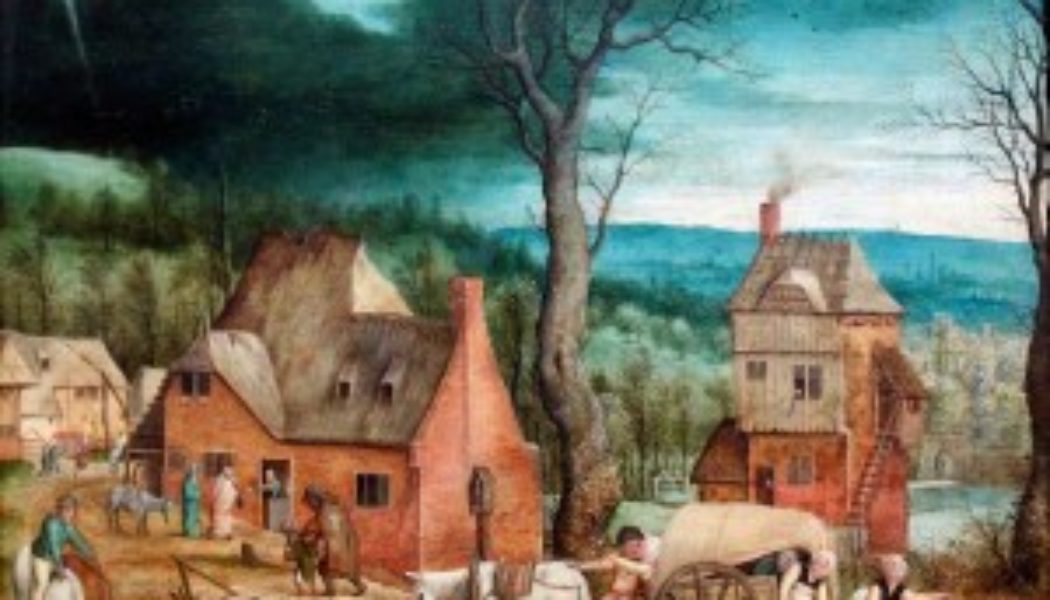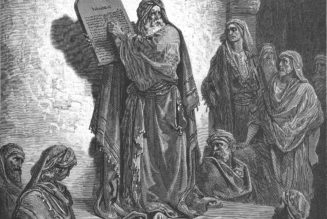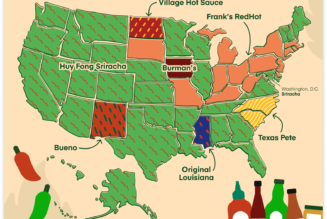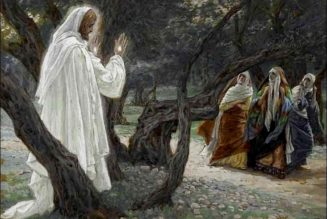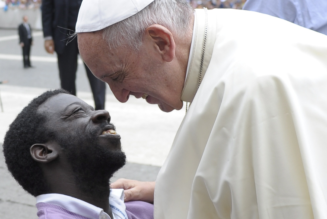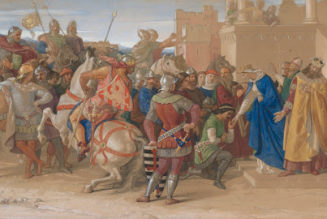 The typical re-telling of the Christmas story has Joseph, Mary and the donkey arriving in Bethlehem on a cold, winter night looking for a place to stay. All the hotels have “No Vacancy” signs on display because so many people, like Mary and Joseph, have traveled to Bethlehem to register for the census.
The typical re-telling of the Christmas story has Joseph, Mary and the donkey arriving in Bethlehem on a cold, winter night looking for a place to stay. All the hotels have “No Vacancy” signs on display because so many people, like Mary and Joseph, have traveled to Bethlehem to register for the census.
A grumpy innkeeper turns them away, but on second thought says if they want they can shelter in the stables. By now Mary is experiencing contractions and desperate for a place where she can give birth, Joseph finds a makeshift shelter in a drafty shed with the donkeys and oxen. He fills a rickety wooden feeding trough with straw to make a crib for the newborn, and when baby Jesus arrives he is wrapped tightly in strips of cloth and laid in the manger bed.
Is that how it happened? No, not really, and yes, but not quite. Was there an inn in Bethlehem? Probably not, as it was such a small village. Where did travelers stay in those times? In her study of travel in the ancient world Sabine Huebner records that along the official Roman roads, spaced about ten miles apart, there was a network of relay stations called mutationes. The relay stations were places to change horses and pack animals.
Spaced about 25 miles apart were mansiones—guesthouses that offered free accommodation for officially sanctioned guests.[1] In addition to the official mansiones there were also public hostelries. St Luke uses the Greek word pandocheion for this kind of inn in the story of the good Samaritan.[2] “These inns, also called katagōgia in Greek, were located along the main transport routes and were often found on the outskirts of cities or larger villages. [3] They provided travelers from the lower social strata with cheap, hot meals and basic accommodation. Pandocheia were widely viewed as disreputable by ancient authors.”[4] Huebner goes on to explain how these inns were known for “drunken guests, adulterated wine, brawls, theft and prostitution.” [5] Quoting classical authors of the time she says, “It was not uncommon for a landlord’s daughter to sell her body as well as wine and a hot meal to travelers.”[6]
Because of Bethlehem’s small size, it would not have included a safe and official mansione which were only located on the main Roman roads, and were only available to travelers on official imperial business. If Bethlehem did have a more basic hostelry—given the reputation of the pandocheia, it would not have been a likely place for St Joseph, a just and righteous man,[7] to have sought shelter for his betrothed and pregnant young wife.
Furthermore, Bethlehem was Joseph’s hometown. Clan loyalty and generous hospitality is a hallmark of Middle Eastern culture.[8] Providing lodging for travelers became one of the characteristic ideals of the Jewish people. [9] Given the Middle East’s strong culture of hospitality and loyalty to family members, Joseph would have naturally sought shelter with family—not in some squalid brothel/tavern.
Kataluma is the Greek word in Luke’s story that is usually translated as “inn” and which has led to the legend of the grumpy innkeeper the imagined “No vacancy” signs, and therefore the popular myth of the Holy Family being homeless.
New Testament scholar Stephen Carlson has done a detailed word study of kataluma.[10] Luke uses it elsewhere when Jesus tells his disciples to find a room to celebrate the Last Supper. He says they will find a kataluma. Here it is translated “Upper Room.” “It was common to add rooms or small structures to the roofs of houses as it became necessary. The most frequent reason was the expansion of a family. A newly married son customarily brought his wife to live in the family house. The father would set aside a room within the house for the couple or build a marital house on the roof.”[11] These upper rooms were also reserved as guest rooms.
Stephen Carlson believes that the word kataluma translated as “inn” is really referring to the upper level guest room or marital chamber which was added to most Palestinian houses.
The Jesuit Biblical scholar Joseph Fitzmeyer writes, “it is rather obvious that [kataluma] does not mean “inn”.[12] Kenneth Bailey, another Biblical scholar who lived in the Holy Land for sixty years also thinks kataluma refers to the upper level guest room. “If Luke expected his readers to think Joseph was turned away from an “inn” he would have used the word pandocheion, which clearly meant a commercial inn.”[13]
Bailey points out that the customs of hospitality to strangers and the strong family loyalties would most certainly mean that Joseph and Mary were not turned away and made homeless on Christmas night. Not only did Joseph have family members in Bethlehem, but Mary had her people (Elizabeth and Zechariah) just seven miles away in Ein Karem.[14] Even if Mary’s pregnancy was scandalous, according to Bailey it would have been unthinkable that Joseph’s family and Mary’s kin would have allowed them to be homeless.
It is far more likely that Joseph, returning to his hometown would have gone to the home either of his father, or (if Joseph was an older man) to the home of a brother or some other member of his extended family.
Bailey goes on to explain in more detail what a typical home in Bethlehem would have been like, “Simple village houses had but two rooms. One was exclusively for guests. That room would be attached to the end of the house or be a ‘prophet’s chamber’ on the roof[15] The main room was a family room. At the end of that room, on a lower level was where the animals were kept. Often the lower level would be a cave—the main room being built in front of the cave. Between the cave and the main room was a stone wall—a half partition where feeding troughs were carved into the stone surface. [16]
An article from 2009 in the Chicago Tribune[17] reports on Palestinian shepherds who still live in cave houses in the same region. In the article, one of the Bedouin shepherds tells how “the animals live in the lower level and we live in the room above.” Bailey affirms, “Such simple homes can be traced from the time of David up to the middle of the twentieth century. I have seen them both in Upper Galilee and in Bethlehem.”[18] “Many houses in the area are still built in front of caves and perhaps we should envisage Joseph as taking his wife into such a back area to give birth away from the living room—the cave part would have been used for stabling and storage.” [19]
So Joseph travels with Mary to Bethlehem. They seek lodging in the home of a relative, but the guest room (kataluma) on the roof is either already occupied or it is too small and inappropriate as a place for Mary to give birth, so they move to the warm stable/cave which makes up the lower level of the family home. There Jesus is born and is laid in one of the stone feeding troughs in the wall between the stable/cave and the main room of the house. This understanding of the story also connects with Matthew’s gospel that says the magi found Mary and the young child in a house rather than a stable/cave.
These details are also supported by the ancient tradition, first found in the Protoevangelium of James and affirmed by Justin Martyr (d.165) and Origen (d. 253) that Jesus was born in a cave. [20]
British scholar R.T. France writes, “Jesus was not born in social exclusion, nor in any more squalid a setting than most people regarded as normal living conditions. Not in a cold, droughty, unwelcoming ‘stable’ but in a warm, if rather crowded, family home. His cradle was unconventional, but not uncomfortable.”[21]
In his influential commentary on Luke’s gospel Alfred Plummer wrote, “It is a little doubtful whether the familiar translation “in the inn” is correct…It is possible that Joseph had relied upon the hospitality of some friend in Bethlehem, whose guest chamber however, was already full when he and Mary arrived.”[22]
Kenneth Bailey also quotes William Thompson, a nineteenth century Presbyterian who observed village homes in Bethlehem, “It is my impression that the birth actually took place in an ordinary house of some common peasant, and that the baby was laid in one of the mangers such was are still found in the dwellings of farmers in this region.”[23]
This essay is a condensed version of a chapter from Fr Longenecker’s book The Secret of the Bethlehem Shepherds published by Sophia Institute Press. Available from dwightlongenecker.com
The Imaginative Conservative applies the principle of appreciation to the discussion of culture and politics—we approach dialogue with magnanimity rather than with mere civility. Will you help us remain a refreshing oasis in the increasingly contentious arena of modern discourse? Please consider donating now.
Notes:
[1] Sabine Huebner, Papyri and the Social World of the New Testament, Cambridge university Press, Cambridge, 2019, p 88.
[2] Luke 10:34
[3] in Latin they are referred to as caupona, thermopolium, diversorium, taberna or stabulum. Huebner. p.157.
[4] ibid. p.111.
[5] ibid.
[6] ibid.
[7] Matthew 1:19
[8] Clinton Bailey, Bedouin Culture in the Bible, Yale University Press, London, 2018, pp. 63-64
[9] Samuel Safrai, The Jewish People in the First Century, Fortress Press, Philadelphia, 1976, v.II, p.762.
[10] Stephen Carlson, The Accommodation of Joseph and Mary in Bethlehem, New Testament Studies, v. 56, no. 2, April 2010.
[11] Safrai, p.731.
[12] Joseph Fitzmeyer SJ, The Gospel According to St Luke, Doubleday, New York, 1979. P. 408.
[13][13] Kenneth Bailey, Jesus Through Middle Eastern Eyes, IVP Academic, Downers Grove, IL, 2008, p.32
[14] ibid, p.28.
[15] the prophet’s chamber is where Elijah found lodging in I Kings 17:19.
[16] Bailey, p. 29.
[17] https://www.chicagotribune.com/news/ct-xpm-1987-12-25-8704050765-story.html
[18] Bailey, p. 29.
[19] Jerome Murphy O’Connor, The Holy Land – An Oxford Archeological Guide, Oxford University Press, Oxford, 1998, p.200.
[20] Brown, p. 401.
[21] R.T. France, The Birth of Jesus, in Handbook for the Study of the Historical Jesus, v. 3, Brill, Boston, 2011.p.2375.
[22] Alfred Plummer, Gospel According to St. Luke, International Critical Commentary, 4th edition, T&T Clark, Edinburgh, 1910, p. 54.
[23] Bailey. p.31.
The featured image is “Arrival of the Holy Family in Bethlehem” (1543) by Cornelis Massijs, and is in the public domain, courtesy of Wikimedia Commons.
